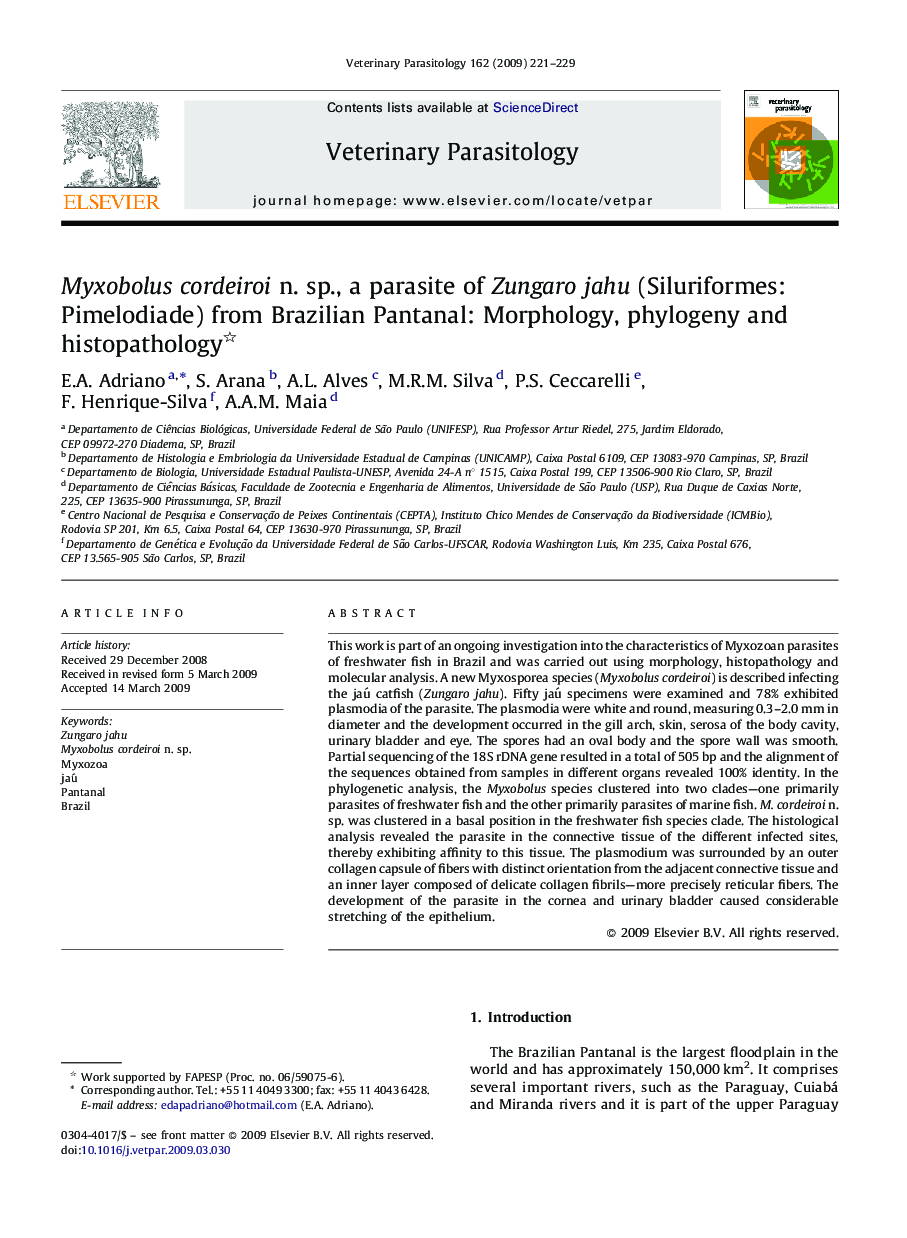| Article ID | Journal | Published Year | Pages | File Type |
|---|---|---|---|---|
| 5806258 | Veterinary Parasitology | 2009 | 9 Pages |
This work is part of an ongoing investigation into the characteristics of Myxozoan parasites of freshwater fish in Brazil and was carried out using morphology, histopathology and molecular analysis. A new Myxosporea species (Myxobolus cordeiroi) is described infecting the jaú catfish (Zungaro jahu). Fifty jaú specimens were examined and 78% exhibited plasmodia of the parasite. The plasmodia were white and round, measuring 0.3-2.0Â mm in diameter and the development occurred in the gill arch, skin, serosa of the body cavity, urinary bladder and eye. The spores had an oval body and the spore wall was smooth. Partial sequencing of the 18S rDNA gene resulted in a total of 505Â bp and the alignment of the sequences obtained from samples in different organs revealed 100% identity. In the phylogenetic analysis, the Myxobolus species clustered into two clades-one primarily parasites of freshwater fish and the other primarily parasites of marine fish. M. cordeiroi n. sp. was clustered in a basal position in the freshwater fish species clade. The histological analysis revealed the parasite in the connective tissue of the different infected sites, thereby exhibiting affinity to this tissue. The plasmodium was surrounded by an outer collagen capsule of fibers with distinct orientation from the adjacent connective tissue and an inner layer composed of delicate collagen fibrils-more precisely reticular fibers. The development of the parasite in the cornea and urinary bladder caused considerable stretching of the epithelium.
